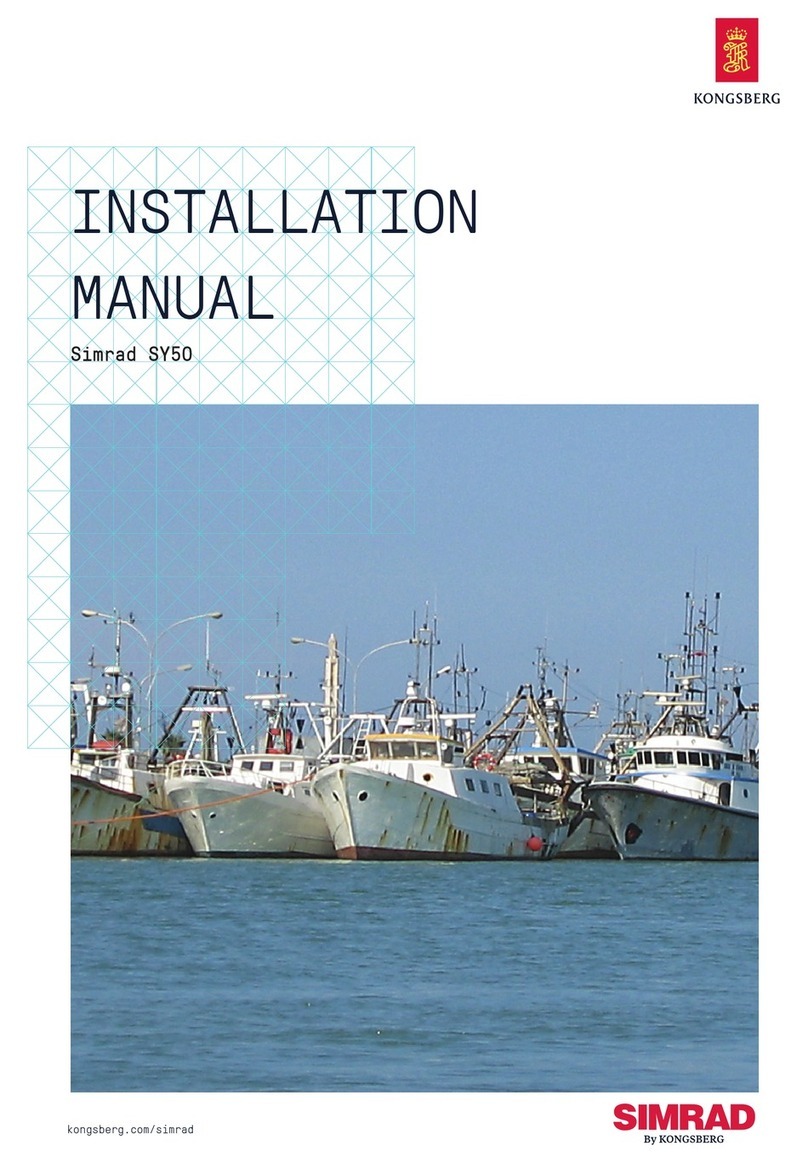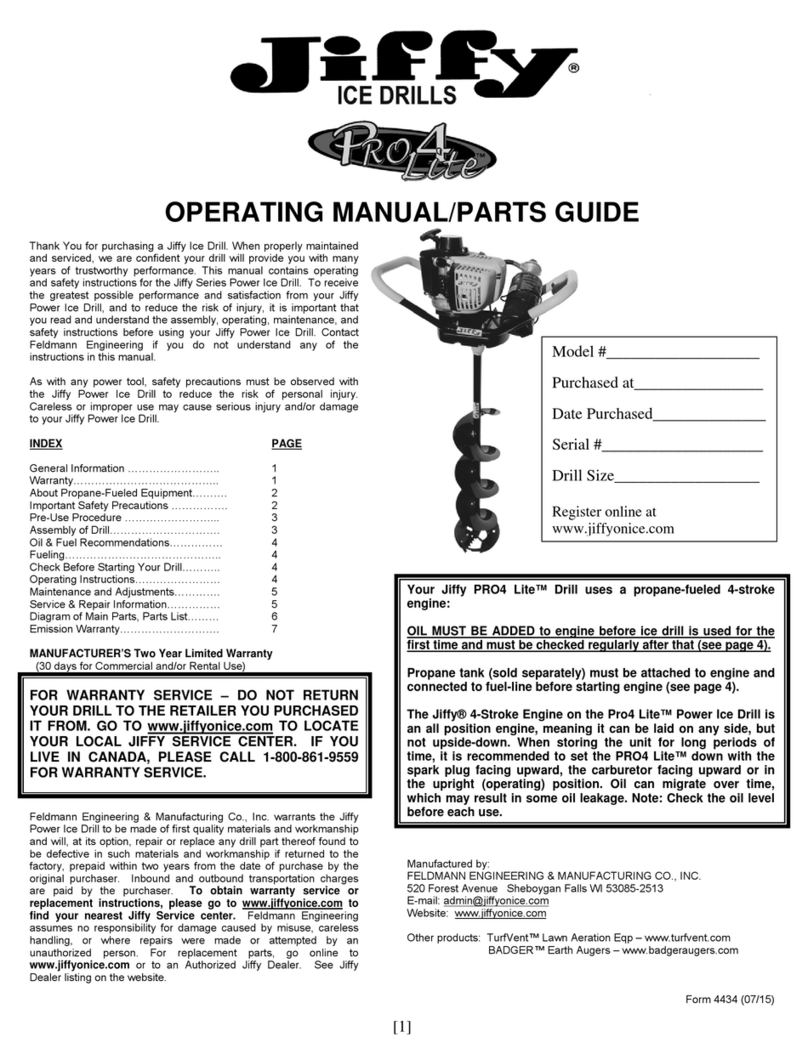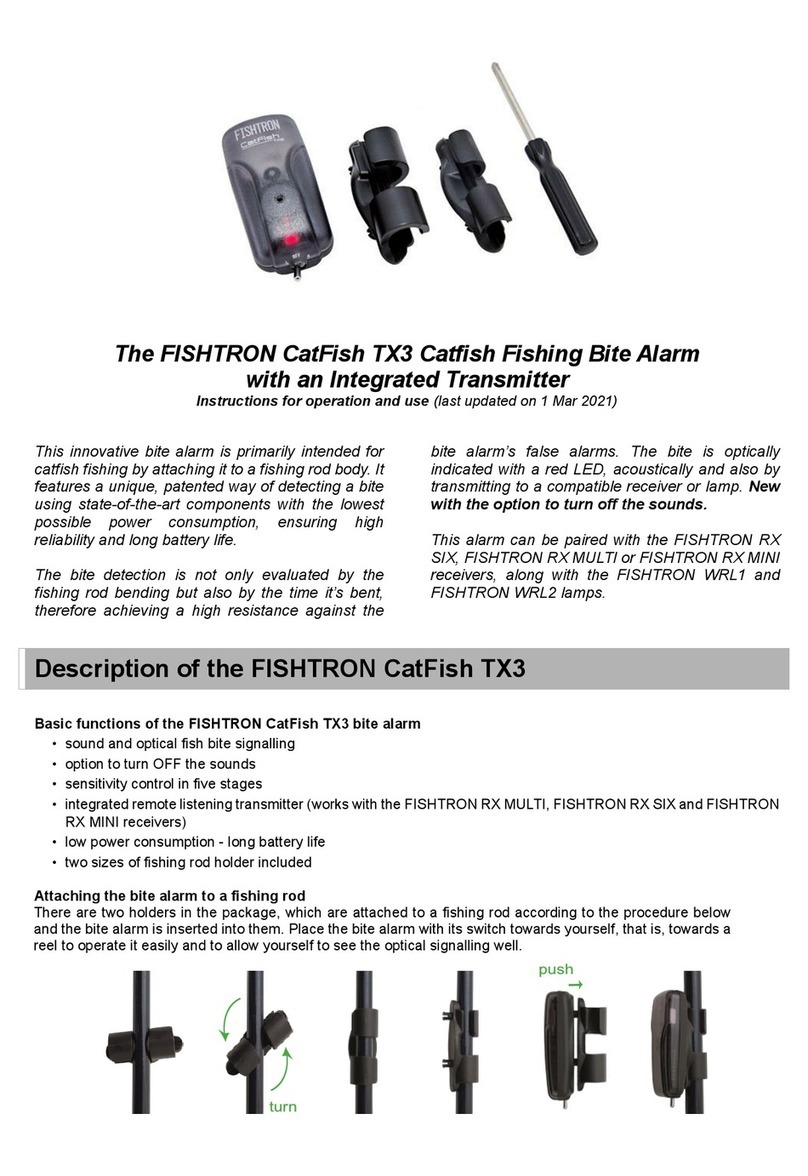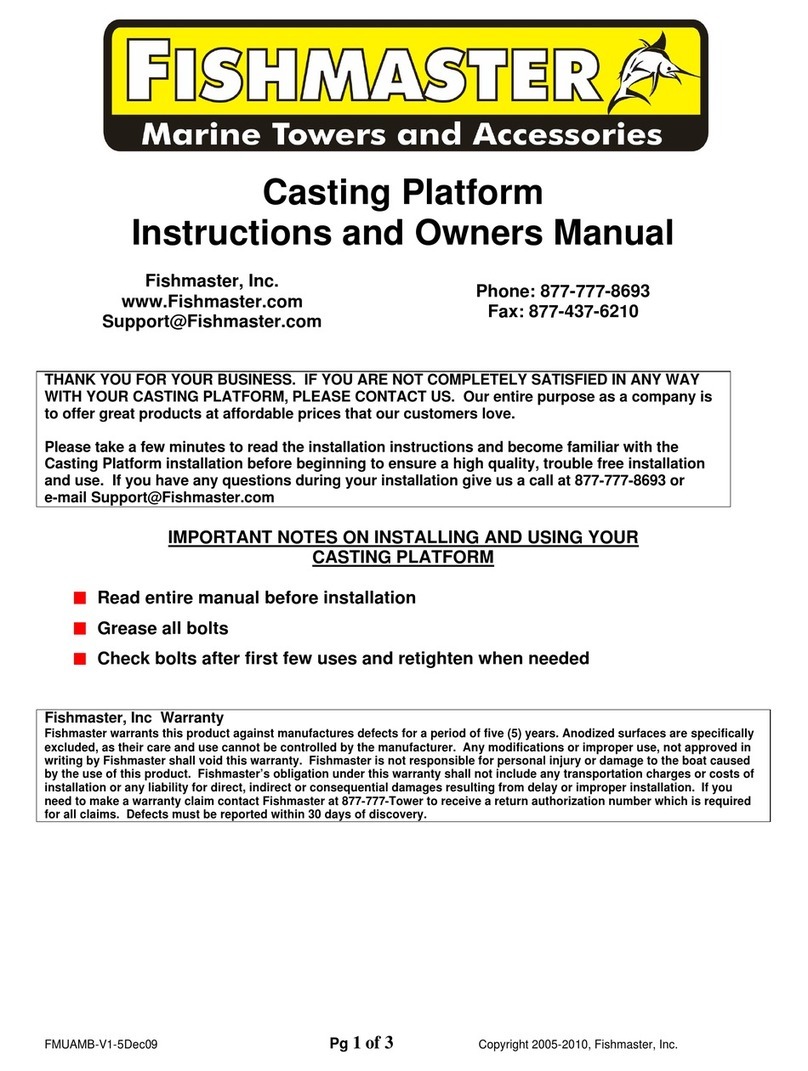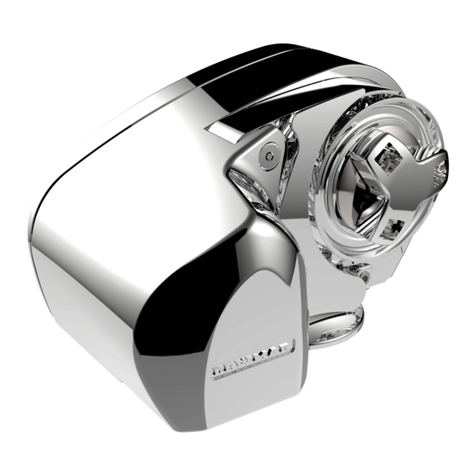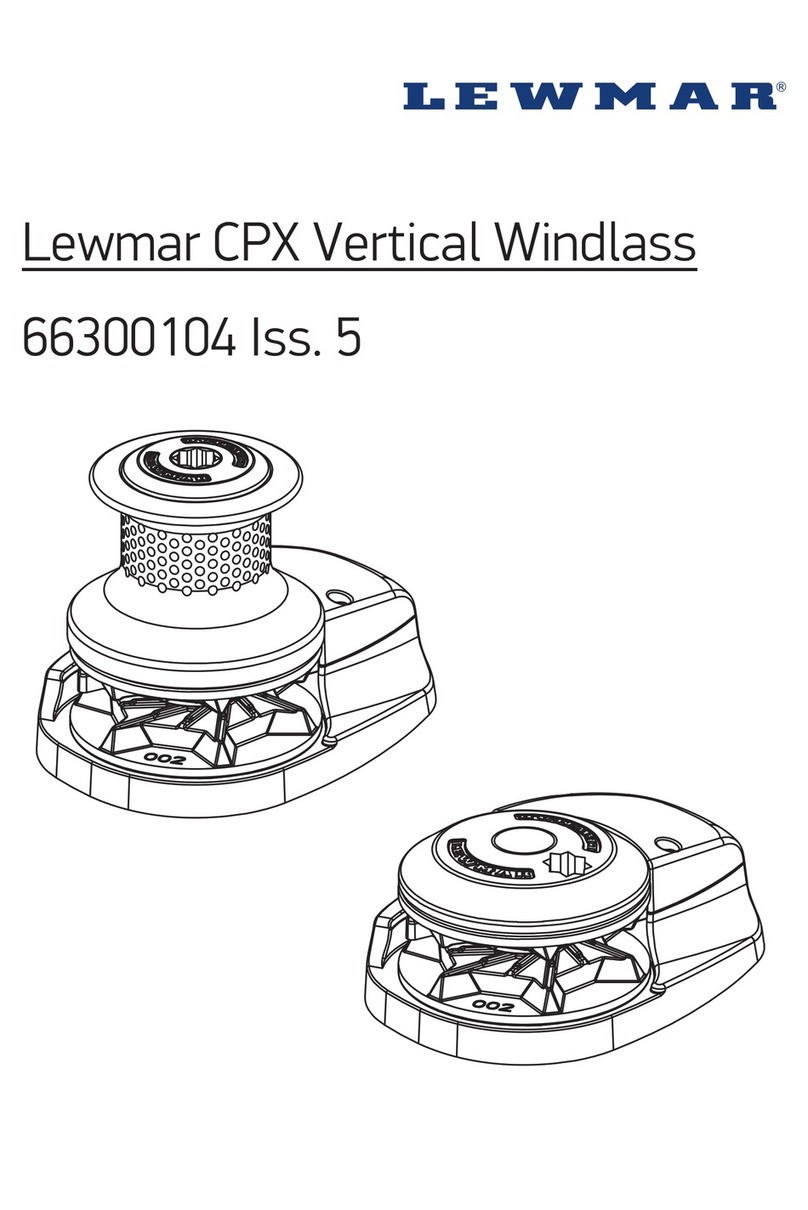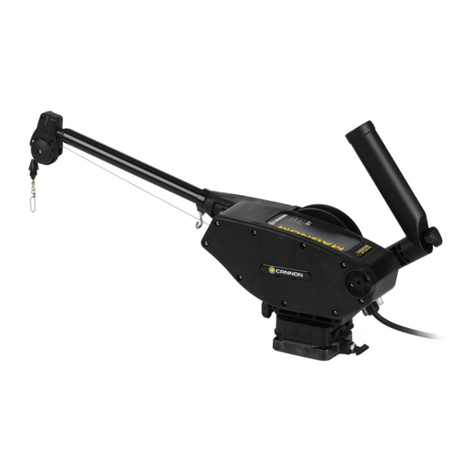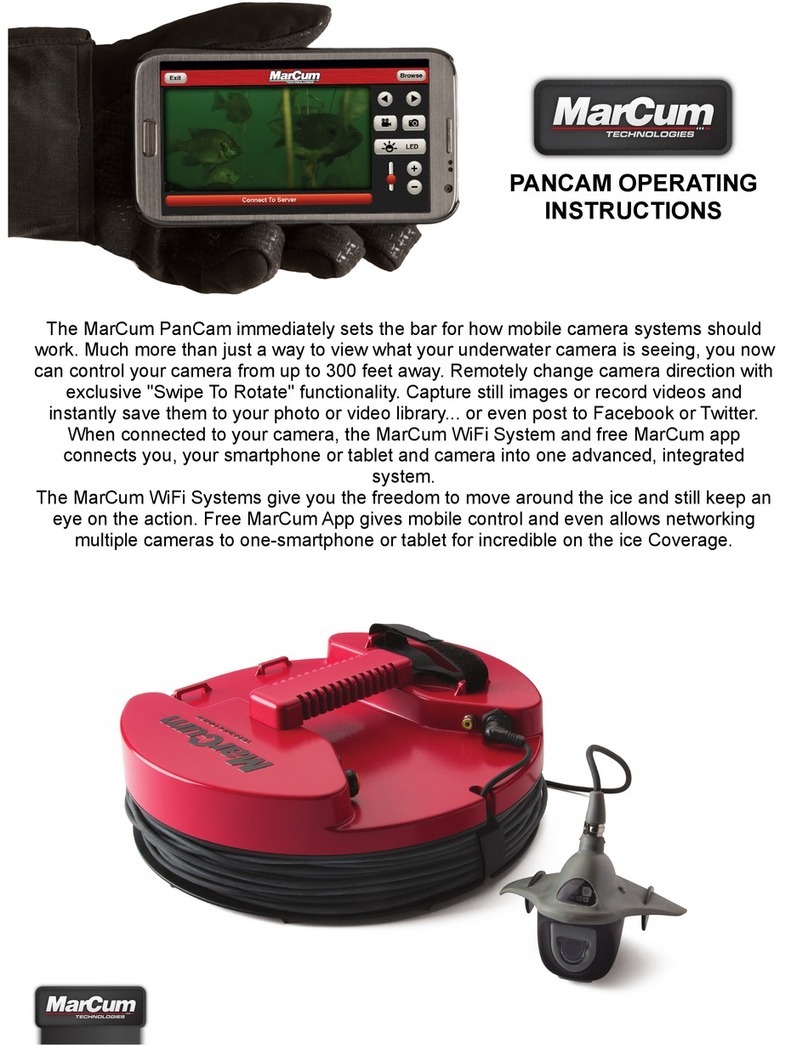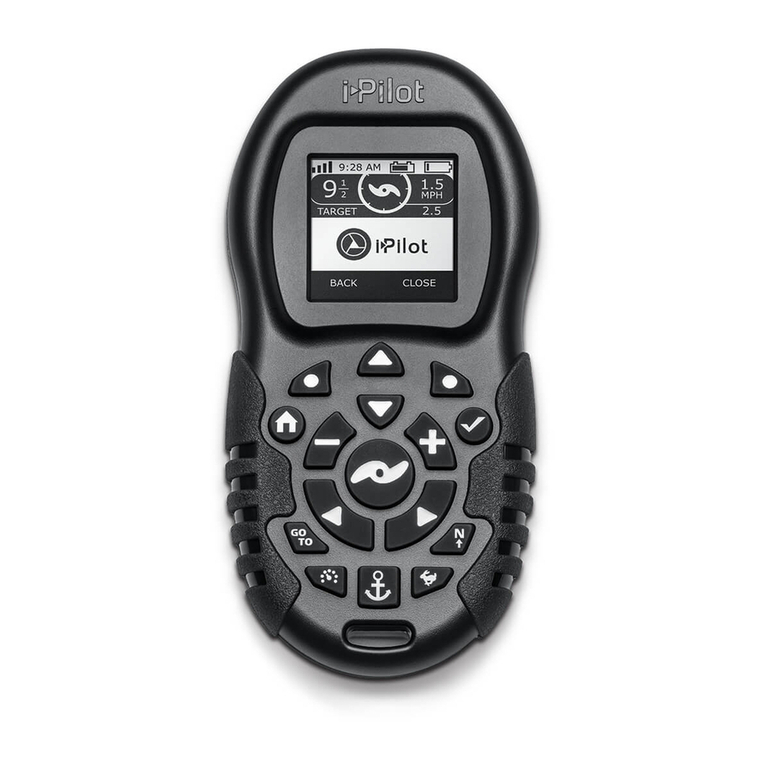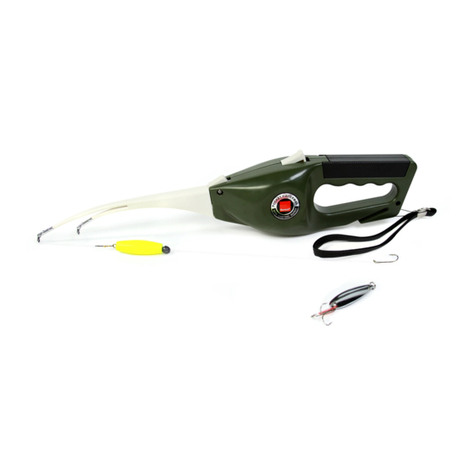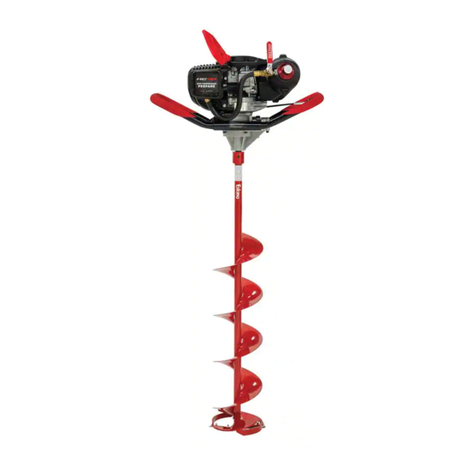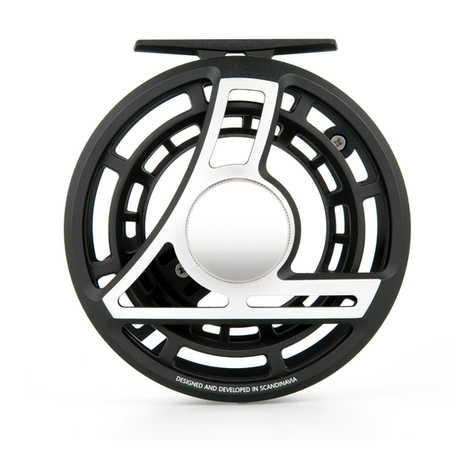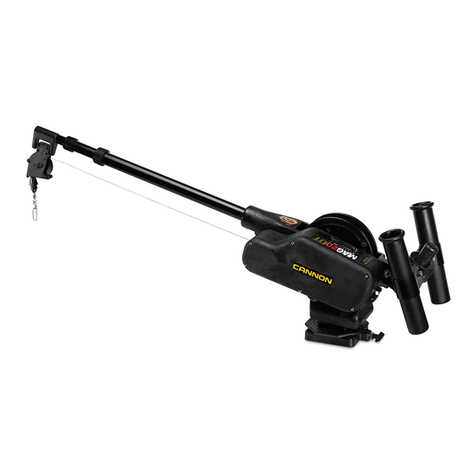
Contents
1. Introduction 3
1.1 Product support 3
1.2 CE Approvals 3
1.3 Important information about
this manual 3
2. Safety Notices 4
2.1 Windlass general 4
2.2 Fitting 5
2.3 Electrical 5
3. Installation 6
3.1 Basic requirements 6
3.2 Accessories 6
3.3 Gypsy Suitability 6
3.4 Above deck preparation 7
3.5 Deck thickness 7
3.6 Bellow deck preparation 8
3.7 Above deck fitting 9
3.8 Under deck fitting 10
3.9 Loading rope/chain 11
4. Electrical Wiring 12
4.1 Electric cable selection 12
4.2 Wiring 12
4.3 Control switch installation 13
4.4 Pro wiring diagram with contactor 14
4.5 Pro wiring diagram with contactor box 15
4.6 Pro wiring diagram with pre-wired
control box 16
5. Operation 17
5.1 Pro-Fish braked anchor freefall 17
5.2 Pro-Series/Sport braked anchor
freefall 18
5.3 Manual anchor recovery 19
5.4 Power up/down 20
5.5 Operating tips 21
6. Servicing 22
6.1 Servicing schedule 22
6.2 Pro-Fish gypsy replacement/service 23
6.3 Pro-Series/Sport gypsy replacement/
service 23
6.4 Pro-Series/Fish parts list 24
6.5 Pro-Sport parts list 25
7. Specifications 26
7.1 Pro-Seies/Fish dimensions 26
7.2 Pro-Sport dimensions 27
7.3 Pro-Series/Fish deck template guide 28
7.4 Pro-Sport deck template guide 29
7.5 Electric specifications 30
8. Trouble shooting 31
8.1 Electric windlass 31
9. Warranty 32
9.1 Limited Warranty and Key Terms of
Supply by Lewmar 32
Contents
Dear Customer,
Thank you for choosing Lewmar.
Lewmar products are world renowned
for their quality, technical innovation
and proven performance. With a
Lewmar product you will be provided
with many years of outstanding
service.
1.1 Product support
Lewmar products are supported by a
worldwide network of distributors and
Authorised Service Representatives. If
you encounter any difficulties with this
product, please contact your national
distributor, oryour local Lewmar
dealer.
1.2 CE Approvals
For CE approval certificates contact
Lewmar.
1.3 Important information
about this manual
Throughout this manual, you will see
safety and product damage warnings.
You must follow these warnings
carefully to avoid possible injury or
damage.
The type of warnings, what they look
like, and how they are used in this
manual are explained as follows:
WARNING! This is a warning against
anything which may cause injury to
people if the warning is ignored. You
are informed about what you must or
must not do in order to reduce the
risk of injury to yourself and others.
SAFETY SYMBOL. When you see
the safety symbol it means:
“Do not...”; “Do not do this”;
or “Do not let this happen”.
1. Introduction
WARNING!
IMPORTANT: Read these notes
before continuing.
2.1 Windlass general
Classification Societies and Lewmar
require that a vessel at anchor must
have its chain/rode held by a chain
stopper or equivalent strong point at
all times!
At all times it is the responsibility
of the boat user to ensure that the
anchor and rode are properly stowed
for the prevailing sea conditions.
This is particularly important with
high-speed powerboats, because an
anchor accidentally deploying while
under way can cause considerable
damage. An anchor windlass is
mounted in the most exposed position
on a vessel and is thus subject to
severe atmospheric attack resulting in
a possibility of corrosion in excess of
that experienced with most other items
of deck equipment. As the windlass
may only be used infrequently, the risk
of corrosion is further increased. It is
essential that the windlass is regularly
examined, operated and given any
necessary maintenance.
Please ensure that you thoroughly
understand the operation and safety
requirements of the windlass before
commencing the installation. Only
persons who are completely familiar
with the controls and those who have
been fully made aware of the correct
use of the windlass should be allowed
to use it. If there is any doubt of how
to install or operate this unit please
seek advice from a suitably qualified
engineer.
• Windlasses used incorrectly could
cause harm to equipment or crew.
• Windlasses should be used with care
and treated with respect.
• Boating, like many other activities
can be hazardous. Even the correct
selection, maintenance and use of
proper equipment cannot eliminate
the potential for danger, serious
injury or death.
• Lewmar windlasses are designed
and supplied for anchor control in
marine applications and are not
to be used in conjunction with any
other use.
2. Safety Notices
WARNING!
• Keep limbs, fingers, clothing and hair
clear of windlass and anchor rope/chain
and anchor during operation. Severe
bodily harm would result.
• Ensure there are no swimmers or divers
nearby when dropping anchor.
• When the Windlass is not in use the
anchor must be tied off onto a cleat
or equivalent strong point to prevent
damage to the boat.
• Windlass must not be used as the sole
means of securing the anchor to the bow
fitting especially under storm conditions.
Anchors should be independently
secured to prevent accidental release.
• Classification Societies require that a
vessel lying at anchor must have its
anchor rope/chain secured to a suitable
independent strong point.
• Do not use windlass for ANY purpose
other than deployment and recovery of
anchor.
• Do not wrap chain around a capstan
barrel or drum where fitted.
• A circuit breaker/isolator should always
be used with this windlass to protect the
motor and cables from overheating and
damage.
• Always switch off this windlass at the
circuit breaker/isolator when not in use.
• It is the unavoidable responsibility of
the owner or master or other responsible
party to assess the risk of any operation
on the vessel.
• Windlass must not be operated whilst
under the influence of alcohol or drugs.
2.2 Fitting
• This equipment must be installed
and operated in accordance with
the instructions contained in this
manual. Failure to do so could
result in poor product performance,
personal injury and/or damage to
your boat.
• Consult the boat manufacturer if you
have any doubt about the strength
or suitability of the mounting
location.
2.3 Electrical
• Make sure you have switched off the
power before you start installing this
product.
• This product requires installation
by a suitably qualified electrical
engineer.
